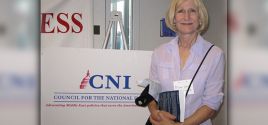QE2: The Fed's Latest Scamby David D'AmatoNov. 04, 2010 |
Popular 
Netanyahu Cries 'Antisemitism' After International Criminal Court Issues Warrant for His Arrest

Trump Nominates Pam Bondi for Attorney General

Schumer Moves to Silence Criticism of Israel as Hate Speech With 'Antisemitism Awareness Act'

FBI Pays Visit to Pro-Palestine Journalist Alison Weir's Home

Matt Gaetz Withdraws from Consideration as Attorney General
 In a press release yesterday, the Federal Reserve announced plans to undertake quantitative easing measures, "purchas[ing] … $600 billion of longer-term Treasury securities by the end of the second quarter of 2011, a pace of about $75 billion per month." Quantitative easing is the sly euphemism used to describe a policy whereby, instead of attempting to pass another highly visible stimulus package through Congress, the central bank purchases the federal government's debt obligations. If we didn't know better, we might speculate that, considering its profligate spending, the Fed has a cache of wealth in a secret vault somewhere, some tangible value to back up its decision. Careful to characterize its latest move as a legitimate treatment for an ailing economy, the many voices of the Fed have stressed that the maneuver is a value-for-value exchange as opposed to a gratuitous handout to the banking/creditor class. While the Fed is paying for something -- government Treasury bonds -- it is acquiring that something at a price that no one in a market completely free from coercion would ever ante up for such rotten debt. Though the Fed is nominally independent, insisting that it is objective, detached and above politics, it is, needless to say, just another bribable arm of the state and about as independent as the judiciary (that is, not very). Were its ideas about economics even somewhat viable, that would mean that the Fed has discovered a way to create something of value from thin air, solving the scarcity problem and eliminating the need for any kind of economic arrangement at all. But the Fed's paper money, like all of the state's unfounded, wonder-drug remedies, is utterly worthless, a gilded facade to cover a decaying system. By diluting the money in our wallets, essentially dividing our dollars into parts and pretending those parts are worth as much as the original bills, the new round of quantitative easing is a veiled tax. Quantitative easing therefore operates to drain the real wealth out of productive society for sake of the banking elite, relieving their books of the debt that only an institution financed by brazen theft would buy; this is the perverse spectacle of the state-created and -backed central bank buying the state's securities with the state's fiat currency. I can scarcely imagine a more dishonest example of outright artifice and chicanery, but we still somehow regard Ben Bernanke as a benevolent and omniscient caretaker with the motivation and ability to rescue the economy. If the securities that the Fed is buying weren't priced so far above their real value, which is close to zero, there would be little incentive for the banks to sell at all; after all, the bonds form a part of what has been a state-corporate scheme for years. "[T]he U.S. Federal Reserve," explains The Economic Collapse, "lends huge quantities of nearly interest-free money to big U.S. banks which they turn around and invest in U.S. Treasuries [i.e., government debt] which bring in a return of three percent or so. In essence, it is a legalized way for the big U.S. banks to make mountains and mountains of free money." Now, though, the U.S. dollar is worth so little -- and the Fed is offering so much -- that the banks can hit the jackpot while the Fed swears that it is fostering liquidity in the lending market for ordinary people. A stateless society, without propped up and favored corporate banks, would not necessarily rule out banks as such, but it would certainly preclude the kind that dominate today, namely fractional reserve banks. These banks are, as described by George F. Smith, those that "issue[] certificates in excess of the actual money they [have] in reserve." The obvious fraud at the heart of the fractional reserve system is concealed and protected by the state's parlous interference in economic life. Among the most powerful ingredients of that interference is the state's monopoly currency, which is detached from the effects of true competition by legal tender laws that forbid natural currencies. A system that allowed free market banks or credit unions to circulate their own currencies would reestablish the link between money and the things or services it is exchanged for; ratios between competing currencies would, in turn, provide the kind of price information that the state's coercive system is so perilously lacking. The Fed is showing the world what anarchists have always understood, that more regulation and state involvement in the marketplace and in banking are jeopardizing rather than protecting the average consumer. The free market, emancipating the working class and shattering privilege, is the lone answer to the corporate morass we're stuck in today. C4SS Contributing Writer David D'Amato is a market anarchist lawyer (he hopes you won't hold it against him) currently completing an LL.M. at Suffolk University Law School. His hatred for superstition and all permutations of political authority manifests itself at www.firsttruths.com. |



